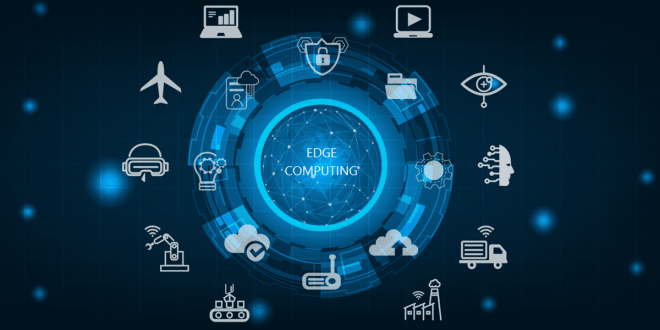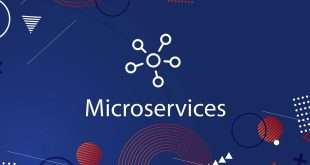In the digital age, where data-driven applications are the backbone of modern businesses, the demand for faster and more efficient data processing is ever-increasing. Edge computing, coupled with Web APIs (Application Programming Interfaces), has emerged as a game-changer in achieving low-latency data processing. This blog delves into the world of edge computing and web APIs, exploring how these advancements are revolutionizing data processing and empowering businesses to stay competitive in a fast-paced digital landscape.
Understanding Edge Computing and its Significance
Edge computing refers to the practice of processing data closer to the source, at the “edge” of the network, rather than relying on a centralized cloud server. This decentralization drastically reduces latency and enhances real-time data processing capabilities. By distributing computing power across edge devices and gateways, businesses can overcome the limitations of traditional cloud-based architectures and unlock the potential of real-time data-driven applications.
The Role of Web APIs in Edge Computing
Web APIs act as the bridge between edge devices and applications, enabling seamless communication and data exchange. They facilitate the secure and efficient transfer of data, commands, and functionalities between diverse endpoints. As businesses increasingly adopt edge computing, web APIs play a pivotal role in ensuring smooth integration and interaction between edge devices and cloud-based services.
Low Latency Data Processing: A Game-Changer for Industries
Advancements in Industrial IoT
The Industrial Internet of Things (IIoT) has witnessed a significant boost with edge computing and web APIs. In manufacturing and industrial sectors, where real-time data analysis is critical for optimal performance, edge computing minimizes data transmission delays and empowers enterprises to monitor and control processes with unmatched precision.
Enhanced User Experience in Smart Devices
From smart homes to wearable devices, edge computing brings low latency to the forefront, ensuring seamless user experiences. Web APIs enable smart devices to fetch and process data swiftly, leading to quicker response times and reduced dependency on constant internet connectivity.
Addressing Security and Privacy Concerns
Edge computing does raise concerns regarding data security and privacy, as data is processed closer to the source. However, with robust security protocols and encryption mechanisms, coupled with secure Web APIs, enterprises can ensure data remains protected at all times.
Web API Tutorials: Empowering Developers and Innovators
Building Web API-Enabled Applications
Developers now have access to extensive web API tutorials that guide them in creating applications that leverage the power of edge computing. These tutorials provide step-by-step guidance, enabling developers to harness the true potential of edge computing and deliver cutting-edge applications to end-users.
Exploring Web API Examples
The availability of diverse web API examples accelerates the learning process for developers. By understanding real-world implementations, developers gain insights into designing and optimizing web APIs for their specific use cases, further propelling the adoption of edge computing.
Overcoming Challenges and Optimizing Performance
Network Connectivity and Reliability
While edge computing reduces dependency on continuous internet connectivity, it does require reliable network infrastructure. Organizations must invest in robust networking solutions to ensure seamless data transmission between edge devices and cloud services.
Scalability and Management
As edge devices proliferate, managing and scaling edge computing resources becomes crucial. Cloud-based management platforms, combined with well-designed web APIs, streamline resource management and enhance overall system scalability.
Final Words
Edge computing, coupled with the power of web APIs, has ushered in a new era of low-latency data processing. Industries are benefiting from real-time insights, enhanced user experiences, and innovative applications, all made possible by the agility of edge computing. Developers and businesses are tapping into web API tutorials and examples to harness this potential fully. As technology continues to evolve, harnessing the power of edge computing with web APIs will remain a cornerstone in driving digital transformation and maintaining a competitive edge in the ever-evolving business landscape.
Commonly Asked Questions
Q1: How do Web APIs improve data processing efficiency in edge computing?
Web APIs facilitate seamless communication between edge devices and cloud services, reducing data transmission delays and enhancing real-time data processing capabilities.
Q2: What role do web API tutorials play in empowering developers?
Web API tutorials provide step-by-step guidance to developers, enabling them to leverage edge computing effectively and create innovative applications.
Q3: Can edge computing overcome security concerns?
Yes, edge computing can address security concerns with robust security protocols and encryption mechanisms, ensuring data remains protected.
Q4: How does edge computing enhance user experiences in smart devices?
Edge computing reduces latency in smart devices, leading to quicker response times and a seamless user experience even with intermittent internet connectivity.
Q5: What challenges should organizations address in adopting edge computing?
Organizations should focus on reliable network connectivity, scalability, and efficient resource management to optimize the benefits of edge computing.
 webfily
webfily



